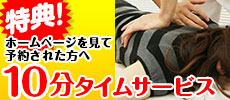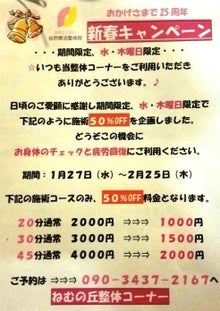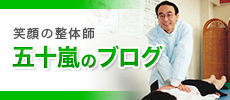Exactly who the publisher of a particular site is-and who the resources of information in the site are-may be unclear to users.
Therefore, the sources’ motivations, qualifications, and trustworthiness are unclear. All of this causes users to wonder in regards to the credibility of websites.
Credibility was mentioned by 7 participants as an important concern. When considering a news story on the internet, one individual said, “One thing i usually search for is who it is originating from. Could it be a reputable source? Can the foundation be trusted? Knowing is vital. I do not want to be fed with false facts.” When asked how believable the given information in an essay on line seemed, another person answered, “that is a concern I ask myself about every internet site.”
The grade of a niche site’s content influences users’ evaluations of credibility, as you person pointed out: “A magazine this is certainly well done sets a tone that is certain impression which are carried through the content. For instance, National Geographic has an excellent feel, a specific image. A website conveys a graphic, too. If it is tastefully done, it may add a lot of credibility to your site.”
Outbound Links Can Increase Credibility
Users rely on hypertext links to greatly help assess credibility associated with given information found in websites. This aspect was produced by 4 participants. “Links are great information. You are helped by them judge whether what the writer is saying holds true,” one said. While reading an essay, one person commented, “this web site is very believable. The writer presents several points of view, and he has links for every point of view.” Another individual made an identical statement about a different essay: “Due to the fact writer is referencing other links, it’s probably relatively accurate information.”
Humor Must Certanly Be Used with Caution
In this research, 10 participants discussed their preferences for humor in various media, plus some evaluated humor in certain websites. Overall, participants said they like a wide variety of humor types, such as for example aggressive, cynical, irreverent, nonsense, physical, and word-play humor. “I like websites when they’re only a few that dry. I love to laugh. I get bored while waiting. I would really like something crafty and clever(to read),” one person said in Study 1.
An online site puns that are containingword-play humor) was referred to as “stupid” and “not funny” by 2 from the 3 participants who visited it. A site that contained cynical humor was enjoyed by all 3 participants who saw it, though only one of them had said earlier that he liked this type of humor.
Given people’s different preferences for humor, it is important for a Web writer to know the audience, before including humor in a site. Of course, using humor successfully might be difficult, because a website’s users could be diverse in a variety of ways (e.g., culture, education, and age). Puns are particularly dangerous for almost any site that expects a number that is large of users.
Users Need To Get Their Information Quickly
This was mentioned by 11 participants. Users like well-organized sites that make important information no problem finding. “Web users are under emotional and time constraints. The essential thing that is important to provide them the details fast,” one participant advised. “I like something highly organized to have quickly from here to there. I want to take action quickly,” one person said about a niche site.
Users would also like fast-loading graphics and fast response times for hypertext links, and so they wish to choose whether or not to download large (slow) graphics. “A slow connection time or response time will push me away,” one user said.
Text Should Always Be Scannable
Scanning can save users time. Through the study, 15 participants always approached Web that is unfamiliar text trying to scan it before reading it. Only 3 participants started reading text word by word, through the the surface of the page to the bottom, without scanning. Elements that enhance scanning include headings, large type, bold text, highlighted text, bulleted lists, graphics, captions, topic sentences, and tables of contents.
One user from Study 1 who scanned an article but did not find what he had been looking for said, “then that would be the end of it if this happened to me at work, where I get 70 emails and 50 voicemails a day. If it does not come right out at me, i will give up it.” “Give me bulleted items,” another user said. While looking at a news site, one individual said, “this can be an easy task to read because it uses bold to highlight certain points.” An essay containing long blocks of text prompted this response: “the way that is whole looked managed to get variety of boring. It’s intimidating. People wish to read things that are split up. It gets the points across better.”
Text Should be Concise
In line with users’ want to quickly get information is the preference (expressed by edubirdies.org/buy-essay-online 11 people) for short text. One individual said, “Websites are too wordy. It’s difficult to read a lot of text on the screen.” While looking at a news story, someone else said, “I like this short style. I do not have time for gobbledygook. I like getting the given information fast.”
Many participants want an internet page to suit using one screen. One person said the following about a news story: “It was a long time. I think it’s far better to have condensed information that is no larger than one screen.”
Participants want a web site to make its points quickly. While reading a movie review, one person said, “There’s a lot of text in here. They need to have more to the stage. Did they want it or did not they?”
Users Like Summaries therefore the Pyramid that is inverted Style
Based on 8 participants, Web writing that displays news, summaries, and conclusions in advance is advantageous and saves time. A participant who was simply reading a web page of article summaries said, “I like the power to read a synopsis and then go right to the article if I’m interested.”
A news story written in the inverted pyramid style (by which news and conclusions are presented first, followed closely by details and background information), prompted this response: “I happened to be able to find the main point quickly, through the first line. I like that.” While reading a news that is different, somebody else said, “It got my attention straight away. This will be a site that is good. Boom. It extends to the point.”
Hypertext is Well-Liked
“The incredible thing that’s available on the internet is the power to go deeper for more information,” one participant said. Into the study, 15 participants said they like hypertext. “Links are a thing that is good. If you just want to browse the page you’re on, fine, you’re not losing anything. But if you would like stick to the links, you are able to. That is the thing that is great the Web,” one person said. When asked how useful hypertext links are, another said, “I could be looking for one document, but i would find 15 other related items that pique my interest. It’s very useful. I really enjoy that.”
However, hypertext is certainly not universally liked: 2 participants said hypertext can be distracting if a website contains “too many” links.
Graphics and Text Should Complement One Another
Words and pictures may be a powerful combination, however they must come together, 5 participants said. “I do not ever desire to see a picture without a caption beneath it,” one participant said.
Graphics that add nothing towards the text are a distraction and waste of time, some people said. “A graphic is good when it relates to the content, however, many are simply wanting to be flashy,” one individual said.
In this study that is empirical 51 Web users tested 5 variations of an internet site. Each version had a definite writing style, though all contained simply the same information. The control version was written in a promotional style (for example., “marketese”); one version was written to encourage scanning; one was concise; one had an “objective,” or non-promotional, writing style; and something combined concise, scannable, and objective language into a single site.
















